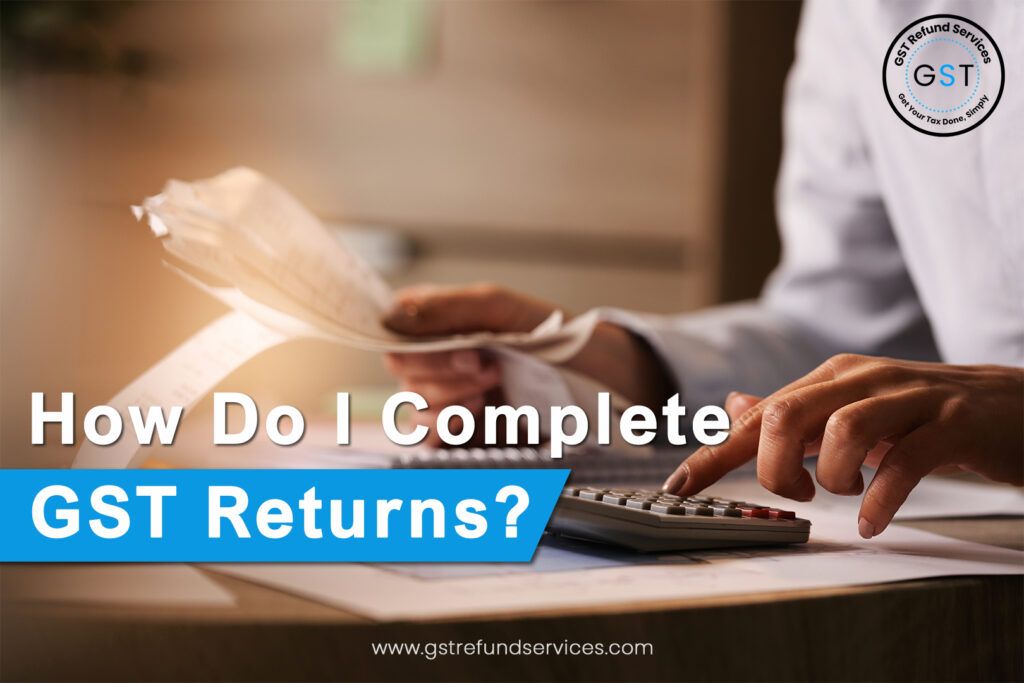5.1 GST Return Types

Filing a GST return is necessary to ensure compliance with Goods and Services Tax (GST) legislation. Different forms of GST returns exist to satisfy different taxpayer categories and their reporting needs. In this chapter, we will look at the different forms of GST returns and the associated filing frequencies and deadlines.
5.1.1 GSTR-1
Registered regular taxpayers are required to file a GSTR-1 return on a monthly or quarterly basis. It contains details about every outbound purchase the taxpayer made within a specific tax period, including goods and services. This return covers sales to consumers (B2C) as well as sales to other registered taxpayers (B2B).
5.1.2 GSTR-3B
Regular taxpayers that are registered file monthly summary returns, or GSTR-3B. It contains information about the taxes owed and paid for the preceding month, together with a summary of all purchases made both internally and outside.
5.1.3 GSTR-4
For those who have selected the Goods and Services Tax Composition Scheme, taxpayers must file a report every quarter called the GSTR-4. The program is intended for small businesses with a yearly turnover under a certain threshold. GSTR-4 contains a summary of their quarterly tax obligations.
5.1.4 GSTR-9
The GSTR-9 is a yearly document that compiles the financial information of taxpayers for the year. The information from the monthly or quarterly GSTR-1 and GSTR-3B reports is combined to provide a comprehensive view of the taxpayer’s activities over the course of the whole fiscal year.
5.1.5 GSTR-9C
On an annual basis, taxpayers whose yearly turnover exceeds a pre-established threshold are required to file an audit report, GSTR-9C. The reconciliation statement needs to be verified by a chartered accountant or cost accounting professional, who should also reconcile the taxpayer’s financial statements and GST filings.
5.1.6 Other Returns
Depending on the specific criteria and taxpayer classifications, there are additional specialized returns in addition to the ones listed above. These involve GSTR-2A (auto-generated using data supplied by the provider), GSTR-5 (for non-resident taxpayers), and more.
5.1.7 Frequency Of Filing And Due Dates
The type of taxpayer, turnover, and tax period are just a few examples of variables that may affect how frequently and when GST returns must be filed. However, the following are typical due dates for some of the well-known returns:
- GSTR-1 (Monthly): The eleventh day of the month after.
- GSTR-3B (Monthly): The twentieth day of the month after
- GSTR-4 (Quarterly): The nineteenth day of the month following the quarter
- GSTR-9 (Annual): The last day of the fiscal year after that
- GSTR-9C (Annual Audit): The end of the following fiscal year, December 31
It’s crucial to remember that these deadlines are approximate, and taxpayers should double-check them with the relevant tax authorities or on the official GST website.
5.2 How do I complete GST returns?

5.2.1 Online Return Preparation And Filing
Using the official website that the tax authorities have provided is the typical procedure for completing GST returns. The following are the steps in the procedure:
- Utilize your GSTIN and password to log into the GST portal.
- Go to the appropriate return form (such as GSTR-1 or GSTR-3B).
- Fill in the necessary information, such as invoice-specific information for outgoing supplies (GSTR-1) or a summary of incoming and outgoing supply details (GSTR-3B).
- Verify the information and correct it as needed.
- Validate the return and check that the data is accurate.
- Pay the necessary tax, if any, and create a PDF of the return.
- Use a digital signature certificate (DSC) or an electronic verification code (EVC) to digitally sign the return.
- Use the GST portal to submit the return.
5.2.2 Common Errors To Prevent
When filing their GST taxes, individuals should proceed with caution to avoid frequent errors that can lead to inconsistencies and penalties. Common mistakes to steer clear of include:
- Incorrect Data Entry: Reconciliation problems can result from entering incorrect invoice details, such as the incorrect GSTIN or invoice amount.
- Missed Deadlines: If returns are not filed within the time limits specified, then there may be late filing fines and fees.
Non-Reconciliation: Inconsistencies and problems can arise during audits if GSTR-1 (outward supplies) and GSTR-3B (summary return) are not reconciled.
Non-Compliance: Failure to abide by GST rules, including paying taxes and filing returns, may have legal repercussions.
Visit Our Website GST Refund Services for More!


